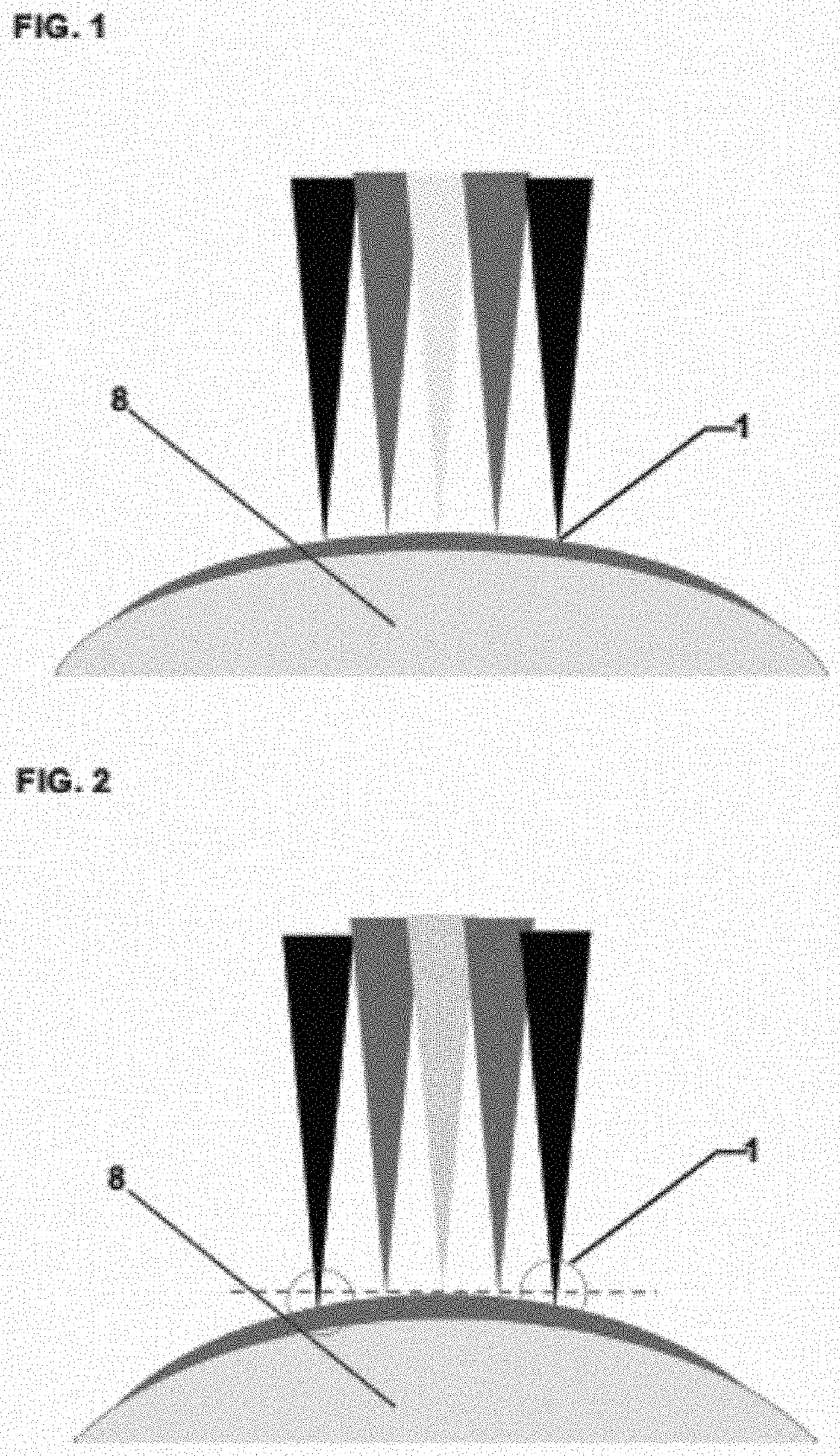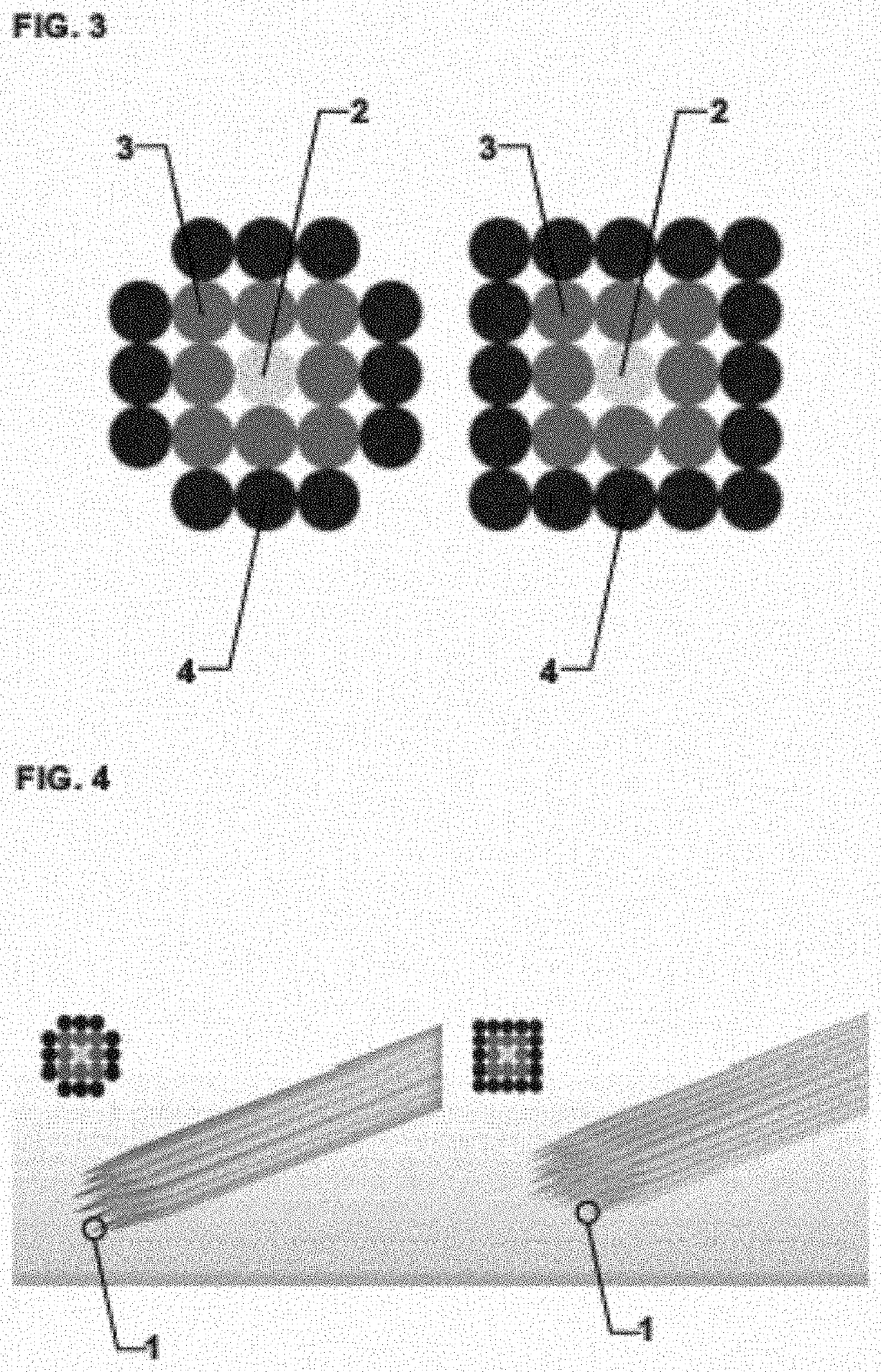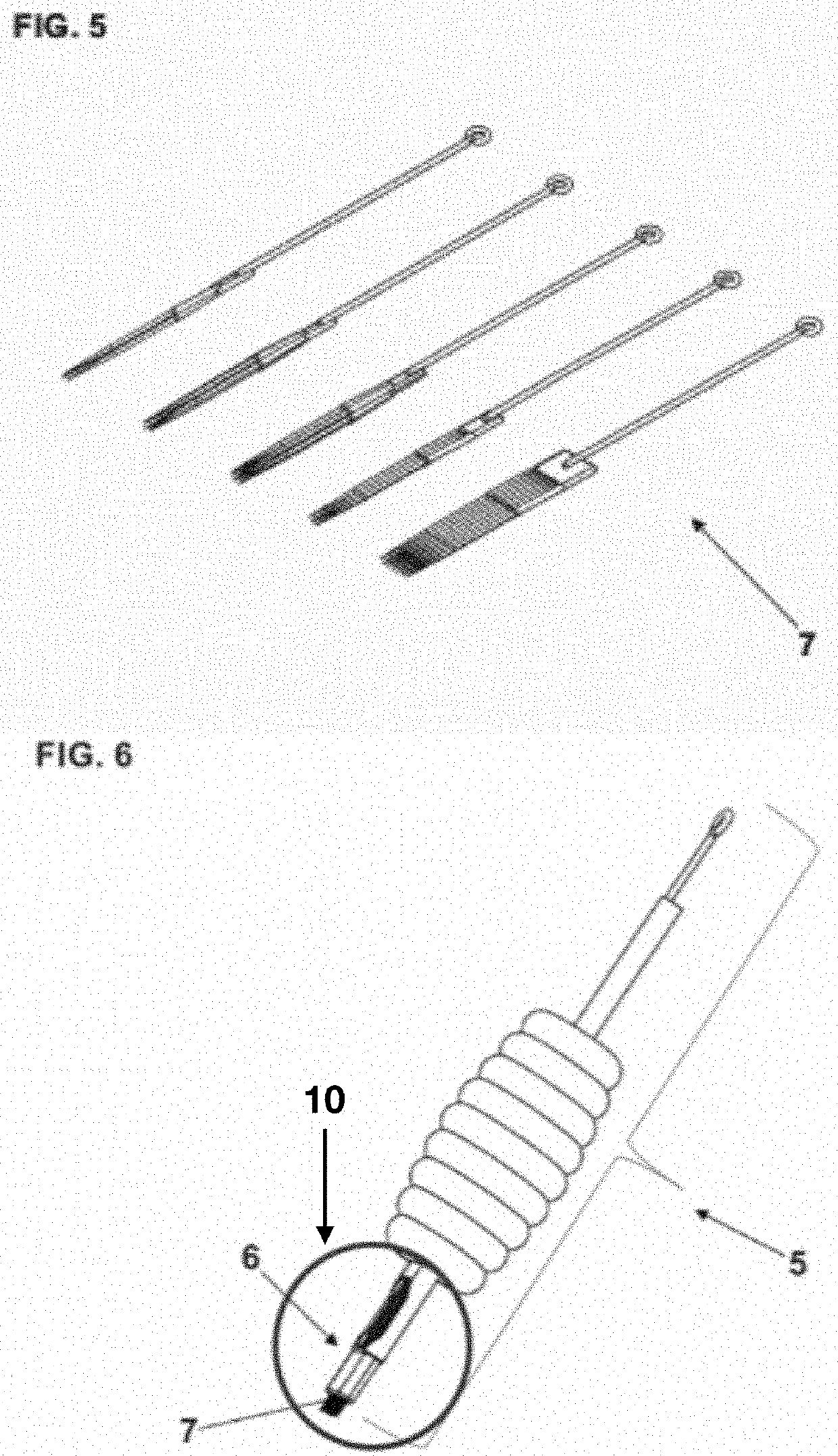Needle improvements for drug delivery using tattoo machines
a technology of tattoo machine and needle, which is applied in the field of needle improvement for drug delivery using tattoo machine, can solve the problems of high cost, low drug bioavailability through cornea, and inability of physicians to permeate the structure with drugs, and achieve the effects of reducing or increasing the strength of drugs, increasing efficacy, and great practicality and agility in surgical procedures
- Summary
- Abstract
- Description
- Claims
- Application Information
AI Technical Summary
Benefits of technology
Problems solved by technology
Method used
Image
Examples
Embodiment Construction
[0053]According to the above-mentioned drawings, the present invention relates to needles (1) for injecting drugs into the eyeball (8) and / or the skin (9) by means of tattoo machines to make eye and / or skin disease treatment more effective, more efficient and safer.
[0054]The principle of the invention is very similar to ancient tattoo techniques. In a drug-loaded cartridge (6), with the drug strength being chosen by a physician, the needles (1), in a back and forth movement, deliver the drug to the corneal stroma (8) and / or eye structures (8) and / or the skin (9). It should be pointed out that, because of the round anatomical structure, the needles (1), as a whole, should be arranged so that the tips (1) are aligned with the curvature of the eye (8) and / or the skin (9), as shown in FIGS. 1, 2 and 8.
[0055]Drug is delivered by means of an adapted tattoo machine which, instead of ink, uses specific drugs, the tattoo machine has a disposable single-piece cartridge (10) having a needle bu...
PUM
 Login to View More
Login to View More Abstract
Description
Claims
Application Information
 Login to View More
Login to View More - R&D
- Intellectual Property
- Life Sciences
- Materials
- Tech Scout
- Unparalleled Data Quality
- Higher Quality Content
- 60% Fewer Hallucinations
Browse by: Latest US Patents, China's latest patents, Technical Efficacy Thesaurus, Application Domain, Technology Topic, Popular Technical Reports.
© 2025 PatSnap. All rights reserved.Legal|Privacy policy|Modern Slavery Act Transparency Statement|Sitemap|About US| Contact US: help@patsnap.com



